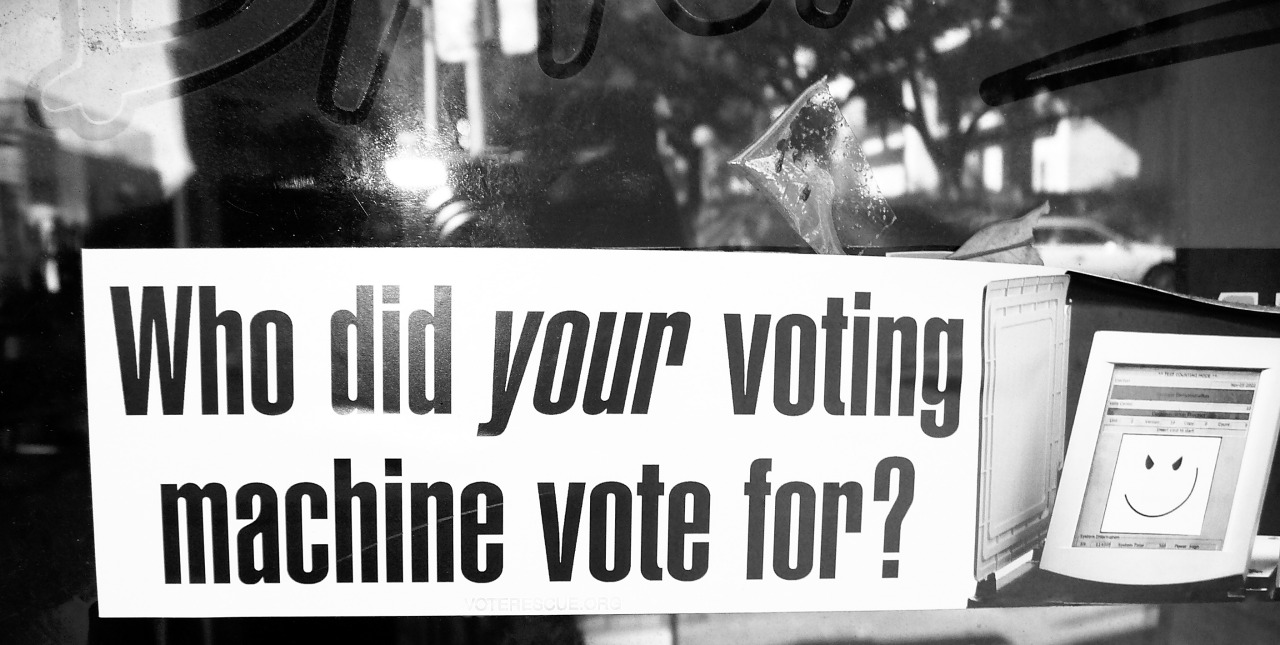
Using data to show probable election hacking is fairly straightforward, but proving it is another matter, says Dean Jonathan Schaeffer. (Photo: GalacticWanderlust via Flickr, CC BY-ND 2.0)
On Wednesday, New York Magazine came out with a report that "Hillary Clinton is being urged by a group of prominent computer scientists and election lawyers to call for a recount in three swing states won by Donald Trump."
The report stated the group "believes they've found persuasive evidence that results in Wisconsin, Michigan and Pennsylvania may have been manipulated or hacked." In other words, precisely what Donald Trump repeatedly stated during the run-up to Nov. 8: "This election is rigged."
The issue at hand is the credibility of electronic voting. There is, according to the story, data to show a discrepancy in some counties that relied on electronic voting machines compared with counties that used optical scanners and paper ballots. The three states in question represent the margin between having president-elect Trump or president-elect Clinton.
Investigating the result
There are two parts to investigating this allegation, both of which hinge on understanding the principles of mathematics and computer science.
First, is there data to suggest that something is amiss? Without seeing the data, it is impossible to pass judgment. However, J. Alex Halderman, a professor of computer science and the director of the University of Michigan's Center for Computer Security and Society is weighing in on the matter. Halderman has an impressive track record and established credibility.
"As a Canadian, it is important to me that the American election result is above reproach. Anything less than that is an affront to democracy. Canada and the world are watching. ." -Jonathan Schaeffer
Here is a simple way of thinking about the claim being made (pardon my mathematical imprecision). Pretend you have two coins and you flip each of them 100 times. Assuming that the coins have no imperfections, you would expect each to get around 50 heads and 50 tails.
The first coin yields the expected result. But flipping the second coin results in 55 heads and 45 tails. This result is possible, but mathematically the chances are small (roughly one in 20 for this example). What if now you flip the second coin 1,000 times and get 550 heads? This is still the same percentage of heads, but now the chances of this occurring drop to around 1 in 6,000. With virtual certainty something is amiss.
Loosely speaking, the above analogy describes what is being alleged.
Data from one set of counties - those that did not use the voting machines - matches expectations (possibly even matching exit polling results). Data from the set of counties using electronic voting machines does not. We have not yet seen the data analysis from the scientists to support their claims, but if the New York Magazine report is accurate, then there is an anomaly that must be investigated.
It is not something that one can write off as an everyday possibility. It is like asking the question, "What are my chances of winning a big lottery prize today?" Possible, but unlikely to say the least.
The second part of the investigation is proof. If something untoward has happened, can it be proven? Sadly, this may prove difficult.
The electronic voting machines are run by computer software. They could have been programmed to ignore some votes, something small enough that it might escape attention. That should be easy to prove: just examine the machine's software. That won't necessarily reveal anything, as clever hackers often leave no trace of what they have done. The program code would be simple: "Wait until Nov. 8, 2016. On that date ignore every 10th vote for the Democrats. At 6 a.m. on Nov. 9, 2016, erase this code." Malicious programs do precisely this to cover their tracks.
There is another way that you can prove that the machines were flawed. It may be that some counties that used electronic voting machines have an independent record of the voting. For example, what if it was discovered that these counties averaged 1,000 people casting votes (as recorded at the polling station) but the machine only registered 900 actual votes?
If there is independent consistent evidence such as this, it will be compelling proof that the results are flawed. Of course, even this would not tell us who was responsible or who was the legitimate winner of the election.
What next?
Where does this leave us? The evidence for voting irregularities must be made public and assessed. If there is cause for concern, then an investigation must be launched. There may be no physical evidence to support the contention that the voting machines were compromised. What do you do, however, if you can prove that the voting pattern recorded by these machines was so unusual that the result had only a one-in-1,000 chance of occurring? Does that constitute reasonable doubt in the legal sense? Does that meet the bar for casting doubt on the result of the U.S. election?
The 2016 presidential race was a bitter contest, perhaps the most partisan election in that nation's history.
Now a credible source may have data to suggest there are widespread voting anomalies. Every American citizen - Republicans and Democrats - must be very concerned and insist on a thorough bipartisan investigation. Going forward, the United States must put in place a process that allows all methods of vote counting to be audited.
As a Canadian, it is important to me that the American election result is above reproach. Anything less than that is an affront to democracy. Canada and the world are watching.
This article originally appeared in the Edmonton Journal on Nov. 26, 2016.